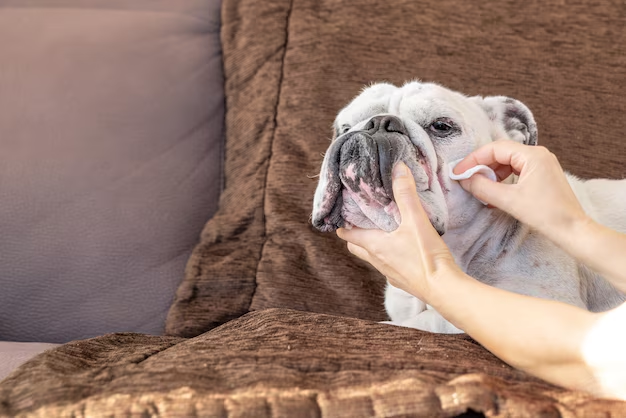Effective Ways to Address Cataracts in Dogs: A Comprehensive Guide
Cataracts in dogs can be a distressing diagnosis for loving pet owners. These cloudy formations over the eye's lens can lead to diminished vision, affecting your furry friend's quality of life. Fortunately, various treatments and strategies can help manage this condition effectively, ensuring your pet remains happy and comfortable. This guide will explore how cataracts develop, potential treatments, and tips for managing your dog's overall eye health.
Understanding Cataracts in Dogs
Cataracts are not unique to humans; dogs can develop them too. When the lens of the eye becomes opaque or cloudy, it leads to impaired vision or even blindness. It's essential to differentiate cataracts from nuclear sclerosis, another common but less severe aging condition in dogs. Understanding the nature of cataracts helps pet owners make informed decisions about their pet's care.
What Causes Cataracts?
Cataracts can result from a variety of factors, including:
- Genetics: Some dog breeds, such as Cocker Spaniels, Poodles, and Siberian Huskies, are more predisposed to developing cataracts.
- Diabetes: Dogs with diabetes are at higher risk of developing cataracts due to elevated blood glucose levels affecting lens clarity.
- Trauma or Injury: Eye injuries can lead to the development of cataracts.
- Aging: As dogs age, their likelihood of developing cataracts increases.
Symptoms to Watch For
Detecting cataracts early can greatly affect the treatment outcome. Symptoms may include:
- Cloudy or bluish-gray appearance in one or both eyes.
- Signs of vision loss, such as bumping into objects.
- Behavioral changes like increased anxiety or hesitancy in unfamiliar environments.
Treatment Options for Cataracts in Dogs
Once a cataract diagnosis is confirmed by a veterinarian, various treatment options can be considered. It's crucial to have a detailed discussion with your vet about the best approach tailored to your dog's specific needs.
Surgical Intervention
For many dogs, surgery is the most effective way to restore vision impaired by cataracts. Known as phacoemulsification, this procedure involves removing the affected lens and replacing it with an artificial one. Here’s what to expect:
- Pre-surgical Evaluation: A thorough eye examination to assess overall eye health.
- Procedure: A small incision is made, and the cloudy lens is removed. An artificial lens is implanted if deemed necessary.
- Recovery: Post-operative care includes medication and restricted activity to ensure proper healing.
Surgical intervention has a high success rate, but it’s crucial to consider factors like your dog's age, overall health, and the stage of cataract development.
Non-Surgical Management
If surgery isn't a viable option, managing your dog's cataracts involves strategies to accommodate vision impairment and maintain eye health:
- Medications: Anti-inflammatory eye drops might be prescribed to reduce inflammation and discomfort.
- Dietary Supplements: Some supplements claim to improve eye health, though their efficacy may vary.
- Environmental Adjustments: Keeping your living space consistent and clutter-free to support your dog’s navigation.
Emerging Treatments
In recent years, advancements in veterinary medicine have seen the exploration of non-invasive treatments like eye drops formulated to dissolve cataracts in their early stages. However, the long-term effectiveness of these treatments is still under evaluation.
Managing Your Dog's Quality of Life
While addressing cataracts is crucial, ensuring your dog's overall well-being is equally important. Here are key tips to help your furry friend adapt and thrive despite vision changes:
Consistent Routine
Dogs with impaired vision rely heavily on routine and consistency. Stick to regular feeding, walking, and play times to provide your dog with a sense of stability and security.
Safe Environment
Creating a safe living environment is essential. Secure sharp-edged furniture, block off stairways, and use textured rugs to help your dog navigate safely.
Enhancing Other Senses
Dogs compensate for vision loss by relying on their other senses. Engage their sense of smell and hearing with puzzle toys and auditory cues. A scent trail can guide them through the house or yard.
Regular Veterinarian Check-Ups
Routine check-ups allow for early detection of any changes in your dog's eye health and facilitate timely interventions. Your vet can recommend appropriate dietary or lifestyle changes that may support eye health.
Visually Distinct Summary Section
Here’s a quick list of practical tips for managing cataracts in dogs:
📝 Key Takeaways:
- Symptoms to Notice: Cloudy eyes, vision loss, behavioral changes.
- Common Causes: Genetics, diabetes, aging, trauma.
- Treatment Options: Surgery, medication, environmental adjustments.
- Quality of Life Tips: Maintain routine, secure environment, enhance other senses.
- Veterinary Care: Regular eye exams and discussions about potential emerging treatments.
Understanding and managing cataracts in dogs is a comprehensive process that involves careful monitoring, medical consultation, and practical lifestyle adjustments. Through these strategies, you can help your dog lead a comfortable and happy life, even with cataracts. Always consult a trusted veterinarian to tailor strategies suited for your pet’s needs, ensuring the best outcomes possible.
